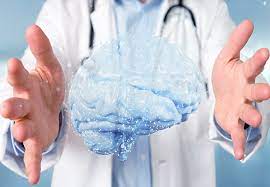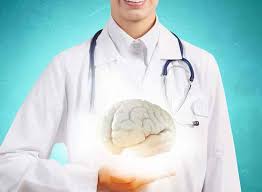Epilepsy in Children By Dr Gautam Arora Neurologist

Dr Gautam Arora

Dr Gautam Arora

Dr Gautam Arora MD DM Neurologist
Things to know for parents with kids affected by seizure disorder by Dr Gautam Arora
Dont let Seizure disorder affect your kids life!”
MONROE, NJ, USA, February 10, 2022 /EINPresswire.com/ -- Epilepsy can hit at any age, but it is most frequent in children and those over 65 years of age.— Dr Gautam Arora
Some children with epilepsy disease will outgrow their seizures as they get older. In contrast, others may continue to suffer seizures until adulthood.
Although epilepsy differs from person to person, many children with epilepsy have seizures that respond well to treatment and lead normal and active lives. Consider consulting a neurologist.
Epilepsy and the family
Epilepsy is occasionally inherited or passed down through families. Parents are concerned about the possibility of epilepsy in the family, ask a neurologist to discuss any dangers in for specific instance. Genetic hazards do not apply to all epilepsies and are, in most cases, insignificant.
There are different types of seizures. The type of seizure depends on which part and how much of the brain is affected and what happens during the seizure. The 2 main categories of epileptic seizures are focal (partial) seizure and generalized seizure.
Focal (partial) seizures
Focal seizures take place when abnormal electrical brain function occurs in one or more areas of one side of the brain. Before a focal seizure, your child may have an aura, or signs that a seizure is about to occur. This is more common with a complex focal seizure. The most common aura involves feelings, such as deja vu, impending doom, fear, or euphoria. Or your child may have visual changes, hearing abnormalities, or changes in sense of smell. The 2 types of focal seizures are:
Simple focal seizure. The symptoms depend on which area of the brain is affected. If the abnormal electrical brain function is in the part of the brain involved with vision (occipital lobe), your child’s sight may be altered. More often, muscles are affected. The seizure activity is limited to an isolated muscle group. For example, it may only include the fingers, or larger muscles in the arms and legs. Your child may also have sweating, nausea, or become pale. Your child won’t lose consciousness in this type of seizure.
Complex focal seizure. This type of seizure often occurs in the area of the brain that controls emotion and memory function (temporal lobe). Your child will likely lose consciousness. This may not mean he or she will pass out. These may range from gagging, lip smacking, running, screaming, crying, or laughing. Your child may be tired or sleepy after the seizure. This is called the postictal period.
Generalized seizure :A generalized seizure occurs in both sides of the brain. Your child will lose consciousness and be tired after the seizure (postictal state). Types of generalized seizures include:
Absence seizure . This is also called petit mal seizure. This seizure causes a brief changed state of consciousness and staring. Your child will likely maintain posture. His or her mouth or face may twitch or eyes may blink rapidly. The seizure usually lasts no longer than 30 seconds. . These seizures may occur several times a day. This type of seizure is sometimes mistaken for a learning or behavioral problem. Absence seizures almost always start between ages 4 to 12.
Atonic seizure. This is also called a drop attack. With an atonic seizure, your child has a sudden loss of muscle tone and may fall from a standing position or suddenly drop his or her head. During the seizure, your child will be limp and unresponsive.
Generalized tonic-clonic seizure (GTC). This is also called grand mal seizure. The classic form of this kind of seizure has 5 distinct phases. Your child’s body, arms, and legs will flex (contract), extend (straighten out), and tremor (shake). This is followed by contraction and relaxation of the muscles (clonic period) and the postictal period. During the postictal period, your child may be sleepy.
Myoclonic seizure. This type of seizure causes quick movements or sudden jerking of a group of muscles. These seizures tend to occur in clusters. This means that they may occur several times a day, or for several days in a row.
What causes a seizure in a child?
A seizure can be caused by many things. These can include:
An imbalance of nerve-signaling brain chemicals (neurotransmitters)
Brain tumor
Stroke
Brain damage from illness or injury
A seizure may be caused by a combination of these. In most cases, the cause of a seizure can’t be found.
What are the symptoms of a seizure in a child?
Your child’s symptoms depend on the type of seizure. General symptoms or warning signs of a seizure can include:
Staring
Jerking movements of the arms and legs
Stiffening of the body
Loss of consciousness
Breathing problems or stopping breathing
Loss of bowel or bladder control
Falling suddenly for no apparent reason, especially when associated with loss of consciousness
The symptoms of a seizure may be like those of other health conditions. Make sure your child sees his or her healthcare provider for a diagnosis.
Khaniya Gupta
NPMC Neurology and Pain Management Clinic
+91 88103 40685
email us here
